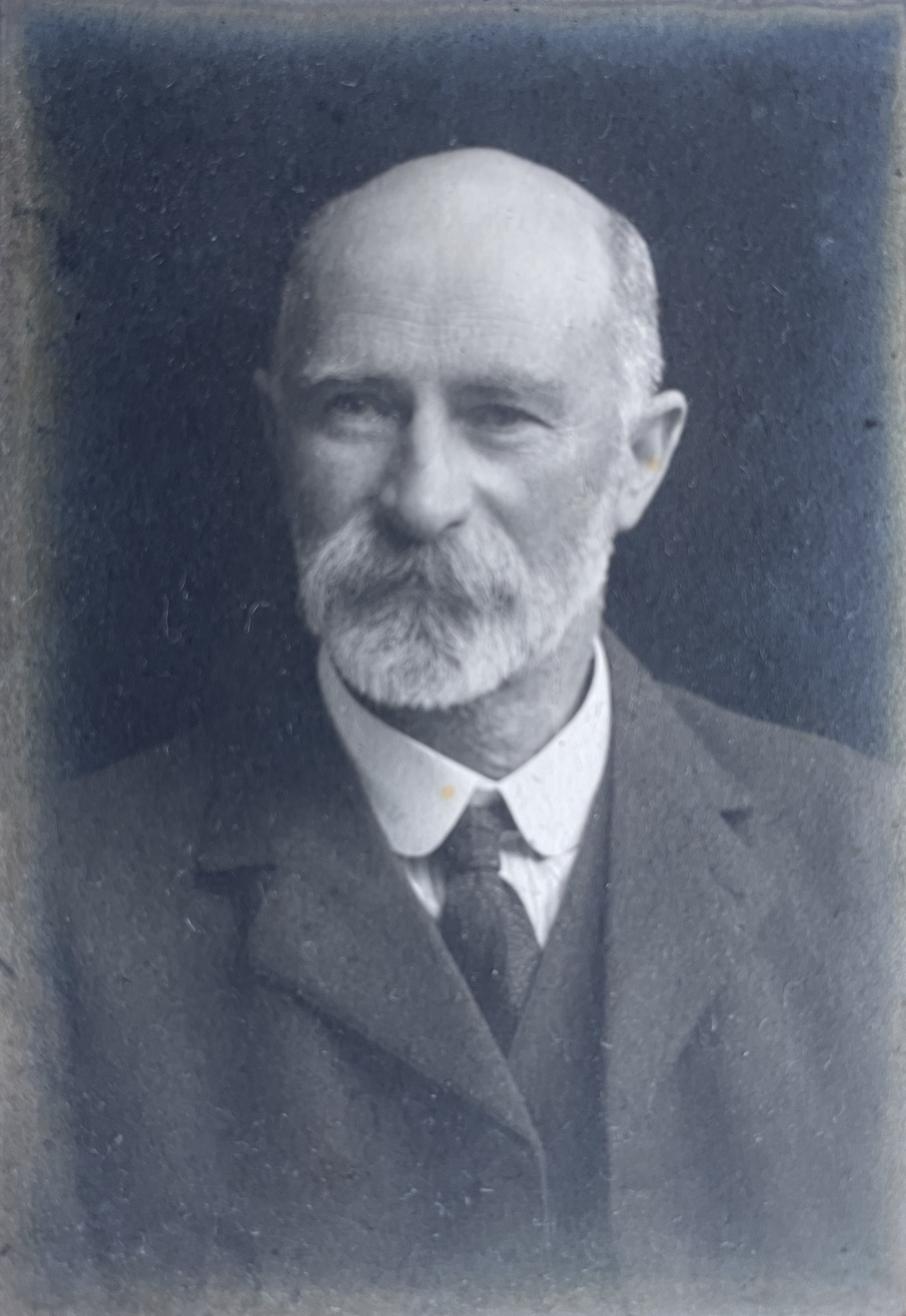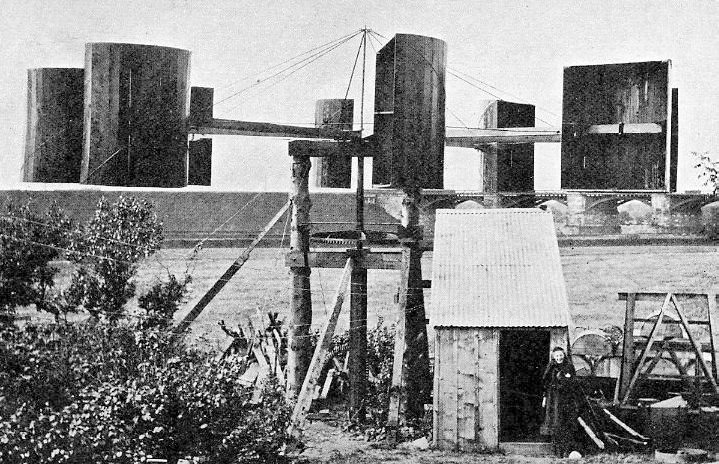|
George Sutherland Thomson
George Sutherland Thomson FRSE FCS (1871–1958) was a 20th-century Scottish biochemist and scientific author, and an expert in the dairy industry. Life He was born in Scotland in 1871. In 1903 he was elected a Fellow of the Royal Society of Edinburgh. His proposers were Robert Patrick Wright, George Alexander Gibson, James Blyth and Ralph Stockman. In March 1904 he was appointed Government Dairy Expert to Queensland ) , nickname = Sunshine State , image_map = Queensland in Australia.svg , map_caption = Location of Queensland in Australia , subdivision_type = Country , subdivision_name = Australia , established_title = Before federation , established_ ... in Australia. He became Dairy Commissioner for South Australia. He died on 29 June 1958. Publications *''The Dairying Industry'' (1907) *''British Colonial Dairying for School, Farm and Factory'' (1913) *''Experiments in the Hand-Feeding of Cows'' *''Grading Dairy Produce'' (1925) *''Butter and Cheese'' (1925) ... [...More Info...] [...Related Items...] OR: [Wikipedia] [Google] [Baidu] |
FRSE
Fellowship of the Royal Society of Edinburgh (FRSE) is an award granted to individuals that the Royal Society of Edinburgh, Scotland's national academy of science and letters, judged to be "eminently distinguished in their subject". This society received a royal charter in 1783, allowing for its expansion. Elections Around 50 new fellows are elected each year in March. there are around 1,650 Fellows, including 71 Honorary Fellows and 76 Corresponding Fellows. Fellows are entitled to use the post-nominal letters FRSE, Honorary Fellows HonFRSE, and Corresponding Fellows CorrFRSE. Disciplines The Fellowship is split into four broad sectors, covering the full range of physical and life sciences, arts, humanities, social sciences, education, professions, industry, business and public life. A: Life Sciences * A1: Biomedical and Cognitive Sciences * A2: Clinical Sciences * A3: Organismal and Environmental Biology * A4: Cell and Molecular Biology B: Physical, Engineering and ... [...More Info...] [...Related Items...] OR: [Wikipedia] [Google] [Baidu] |
Royal Society Of Edinburgh
The Royal Society of Edinburgh is Scotland's national academy of science and letters. It is a registered charity that operates on a wholly independent and non-partisan basis and provides public benefit throughout Scotland. It was established in 1783. , there are around 1,800 Fellows. The Society covers a broader selection of fields than the Royal Society of London, including literature and history. Fellowship includes people from a wide range of disciplines – science & technology, arts, humanities, medicine, social science, business, and public service. History At the start of the 18th century, Edinburgh's intellectual climate fostered many clubs and societies (see Scottish Enlightenment). Though there were several that treated the arts, sciences and medicine, the most prestigious was the Society for the Improvement of Medical Knowledge, commonly referred to as the Medical Society of Edinburgh, co-founded by the mathematician Colin Maclaurin in 1731. Maclaurin was unhappy ... [...More Info...] [...Related Items...] OR: [Wikipedia] [Google] [Baidu] |
Robert Patrick Wright
Sir Robert Patrick Wright (1857–1938) was a Scottish farmer and agriculturalist. He was Chairman of the Scottish Board of Agriculture and was knighted by King George V on 6 July 1911. Life He was born on 12 February 1857 the son of Robert Wright, a tenant farmer of Downan Farm near Ballantrae in Ayrshire, one of eight siblings. He was educated at Ayr Academy, then undertook formal training at the University of Edinburgh under Prof John Wilson. He took up farming but abandoned it due to his views on land tenure, and instead focussed on Scottish land reforms and improvements for tenant farmers. He became Professor of Agriculture at the West of Scotland Technical College around 1890. In 1896 he was elected a Fellow of the Royal Society of Edinburgh. His proposers were Andrew Peebles Aitken, John Gray McKendrick, Magnus Maclean and William Jack. In 1910 he was living at "Maraval", a villa in Uddingston. He became Sir Robert Patrick Wright when knighted by King Ge ... [...More Info...] [...Related Items...] OR: [Wikipedia] [Google] [Baidu] |
George Alexander Gibson
George Alexander Gibson FRSE FRCPE (27 January 1854 – 18 January 1913) was a Scottish physician, medical author and amateur geologist. As an author he wrote on the diverse fields of both geology and heart disease. The Gibson Memorial Lecture is named after him. He was the first to discover a heart condition – the Gibson Murmur – which is named after him. Life He was born at Kelliebank in Muckhart on 27 January 1854, the son of George Gibson, a solicitor based in Alloa, and his wife Jane Rae Brown. He was educated at Dollar Academy. He then studied law at both Glasgow University and Edinburgh University but instead chose to change his study to Medicine and graduated BSc in 1874. He won the Falconer Memorial Fellowship and graduated DSc in 1877 with a thesis on the old red sandstone of Shetland. He then undertook postgraduate studies in London, Dublin and Berlin, before gaining his MD from Edinburgh University in 1881. After a very brief spell at Birmingham General Hospi ... [...More Info...] [...Related Items...] OR: [Wikipedia] [Google] [Baidu] |
James Blyth (engineer)
Professor James Blyth MA, LLD, FRSE FRSSA (4 April 1839 – 15 May 1906) was a Scottish electrical engineer and academic at Anderson's College, now the University of Strathclyde, in Glasgow. He was a pioneer in the field of electricity generation through wind power and his wind turbine, which was used to light his holiday home in Marykirk, was the world's first-known structure by which electricity was generated from wind power. Blyth patented his design and later developed an improved model which served as an emergency power source at Montrose Lunatic Asylum, Infirmary & Dispensary for the next 30 years. Although Blyth received recognition for his contributions to science, electricity generation by wind power was considered uneconomical and no more wind turbines were built in the United Kingdom until 1951, some 64 years after Blyth built his first prototype. Early life James Blyth was born in Marykirk, Kincardineshire, on 4 April 1839 to John Blyth, an innkeeper and sma ... [...More Info...] [...Related Items...] OR: [Wikipedia] [Google] [Baidu] |
Ralph Stockman
Dr Ralph Stockman MD LLD (3 August 1861–27 February 1946) was a Scottish Professor of Materia Medica and Therapeutics at the University of Glasgow. He was an expert on iron deficiency anaemia. Life Stockman was born on 3 August 1861 at Wellington Street in Leith the son of William J. Stockman. The family moved to 2 Bonnington Place in his youth, soon after the birth of his younger brother, Stewart Stockman. Ralph was educated at the Royal High School in Edinburgh then studied medicine at the University of Edinburgh graduating with a MB ChB in 1882. He then did postgraduate studies at both Vienna and Strasbourg before returning to Edinburgh to obtain his doctorate (MD) in 1886. He then moved to Glasgow to work at the Glasgow Western Infirmary and lecture at the University of Glasgow. In 1897 he was given a professorship. In 1888 he was elected a Fellow of the Royal Society of Edinburgh. His proposers were Sir Andrew Douglas Maclagan, Alexander Crum Brown, Sir German ... [...More Info...] [...Related Items...] OR: [Wikipedia] [Google] [Baidu] |
Queensland
) , nickname = Sunshine State , image_map = Queensland in Australia.svg , map_caption = Location of Queensland in Australia , subdivision_type = Country , subdivision_name = Australia , established_title = Before federation , established_date = Colony of Queensland , established_title2 = Separation from New South Wales , established_date2 = 6 June 1859 , established_title3 = Federation , established_date3 = 1 January 1901 , named_for = Queen Victoria , demonym = , capital = Brisbane , largest_city = capital , coordinates = , admin_center_type = Administration , admin_center = 77 local government areas , leader_title1 = Monarch , leader_name1 = Charles III , leader_title2 = Governor , leader_name2 = Jeannette Young , leader_title3 = Premier , leader_name3 = Annastacia Palaszczuk ( ALP) , legislature = Parliament of Queensland , judiciary = Supreme Court of Queensland , national_representation = Parliament of Australia , national_representation_type ... [...More Info...] [...Related Items...] OR: [Wikipedia] [Google] [Baidu] |
1871 Births
Events January–March * January 3 – Franco-Prussian War – Battle of Bapaume: Prussians win a strategic victory. * January 18 – Proclamation of the German Empire: The member states of the North German Confederation and the south German states, aside from Austria, unite into a single nation state, known as the German Empire. The King of Prussia is declared the first German Emperor as Wilhelm I of Germany, in the Hall of Mirrors at the Palace of Versailles. Constitution of the German Confederation comes into effect. It abolishes all restrictions on Jewish marriage, choice of occupation, place of residence, and property ownership, but exclusion from government employment and discrimination in social relations remain in effect. * January 21 – Giuseppe Garibaldi's group of French and Italian volunteer troops, in support of the French Third Republic, win a battle against the Prussians in the Battle of Dijon. * February 8 – 1871 French legislative election elect ... [...More Info...] [...Related Items...] OR: [Wikipedia] [Google] [Baidu] |
1958 Deaths
Events January * January 1 – The European Economic Community (EEC) comes into being. * January 3 – The West Indies Federation is formed. * January 4 ** Edmund Hillary's Commonwealth Trans-Antarctic Expedition completes the third overland journey to the South Pole, the first to use powered vehicles. ** Sputnik 1 (launched on October 4, 1957) falls to Earth from its orbit, and burns up. * January 13 – Battle of Edchera: The Moroccan Army of Liberation ambushes a Spanish patrol. * January 27 – A Soviet-American executive agreement on cultural, educational and scientific exchanges, also known as the " Lacy–Zarubin Agreement", is signed in Washington, D.C. * January 31 – The first successful American satellite, Explorer 1, is launched into orbit. February * February 1 – Egypt and Syria unite, to form the United Arab Republic. * February 6 – Seven Manchester United footballers are among the 21 people killed in the Munich air disaster in West G ... [...More Info...] [...Related Items...] OR: [Wikipedia] [Google] [Baidu] |
Fellows Of The Royal Society Of Edinburgh
The Royal Society of Edinburgh is Scotland's national academy of science and letters. It is a registered charity that operates on a wholly independent and non-partisan basis and provides public benefit throughout Scotland. It was established in 1783. , there are around 1,800 Fellows. The Society covers a broader selection of fields than the Royal Society of London, including literature and history. Fellowship includes people from a wide range of disciplines – science & technology, arts, humanities, medicine, social science, business, and public service. History At the start of the 18th century, Edinburgh's intellectual climate fostered many clubs and societies (see Scottish Enlightenment). Though there were several that treated the arts, sciences and medicine, the most prestigious was the Society for the Improvement of Medical Knowledge, commonly referred to as the Medical Society of Edinburgh, co-founded by the mathematician Colin Maclaurin in 1731. Maclaurin was unhappy ... [...More Info...] [...Related Items...] OR: [Wikipedia] [Google] [Baidu] |





_(LOC)_-_Flickr_-_The_Library_of_Congress.jpg)
.jpg)
